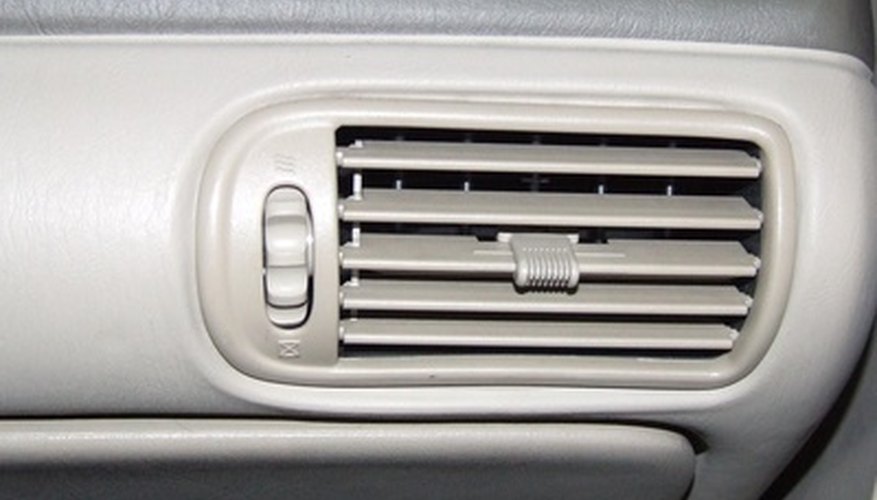Do a little troubleshooting to keep the AC system in your Suzuki Vitara running smoothly this summer. Any problems that might arise are relatively simple to diagnose, whether it is an issue with the magnetic clutch or a leaky hose. Before taking your Vitara in to an AC mechanic for what could turn out to be an expensive service, there are a few troubleshooting steps you can run through on your own.
Check the fuse box for any blown fuses. The fuse box for the Suzuki Vitara is usually under the dash on the driver's side, but check with your owner's manual for the particular year of your Vitara. Read the schematic on the inside cover of the fuse box cover to locate the fuse corresponding to the air conditioning system. If the metal fuse is broken, replace it with another of the same amperage rating.
- Do a little troubleshooting to keep the AC system in your Suzuki Vitara running smoothly this summer.
- The fuse box for the Suzuki Vitara is usually under the dash on the driver's side, but check with your owner's manual for the particular year of your Vitara.
Start the engine and turn on the electric blower fan and AC to check if any of the AC controls are loose or hard to move. Replace any damaged controls. If the blower fan does not kick on, a fuse may have blown, or the fan itself could have malfunctioned.
Check for leaks in the AC hoses. If you notice an oily residue on the outside of the hoses, have them replaced.
Check the two heater hoses (with the engine running) under the bonnet near the firewall. Both hoses should be warm to the touch but one should be noticeably cooler than the other. The hoses are roughly the thickness of a regular garden hose. The firewall is the meal divider between the passenger and engine compartments and extends from the windscreen to the under side of the engine. If the hoses are both the same temperature, the valve control could be faulty. Have a mechanic investigate further for you as the valve control may need replacement.
- Start the engine and turn on the electric blower fan and AC to check if any of the AC controls are loose or hard to move.
- Have a mechanic investigate further for you as the valve control may need replacement.
Check the AC system for adequate pressure. Turn off the engine and attach the AC pressure gauge. Remove the black caps from the high and low service ports on your Suzuki Vitara's AC unit. Screw the blue hose to the low-side service port and the red hose to the high-side port. Check the red and blue glass gauges for the readings. A normal reading should be between 50 and 80 PSI. If the reading is out of this range, have a mechanic investigate further as there may be a leak in the system.
- Check the AC system for adequate pressure.
- Check the red and blue glass gauges for the readings.
Set the AC to the highest setting with the engine running. Check under the bonnet to see if the magnetic clutch attached to the AC compressor engages. You will be able to see and hear it turn over. If the clutch does not spin, the system may be low on refrigerant. Have a mechanic refill the system. Ensure that the drive belt is tightly connected to the compressor. If the compressor is excessively loud, the unit may be failing. Have a mechanic replace the compressor. If you notice leakage around the compressor shaft seal, the seal also needs replacement.
- Set the AC to the highest setting with the engine running.
- If the clutch does not spin, the system may be low on refrigerant.
